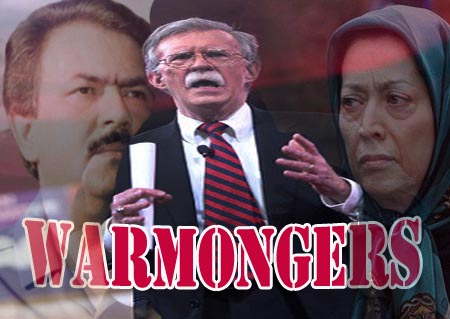The protests of some Iranian citizens during the past week show that protesters have gone well beyond strictly economic grievances to challenge their government. “Across Iran’s heartland, from the sweltering heat of its southern cities to the bustling capital, protesters have taken to the streets with increasing intensity in recent months, much to the satisfaction of the Trump administration, which is hoping the civil unrest will put pressure on Iranian leaders,” writes Thomas Erdbrink of New York Times.
The NY Times correspondent tries to give a detailed account of the protests in Iran interviewing different people with different political point of views. What is clearly indicated in the report is that protesters’ aspirations have nothing to do with the MKO. If in some cases they chant slogans in favor of Reza Shah–who is described as “an authoritarian who industrialized Iran at the beginning of the century, with a very firm hand” by the NY times—in no one calls on Rajavi as an alternative to the Islamic Republic. [1]
Although the Mujahedin Khalq Organization (the MKO/ MEK/ PMOI/ the Cult of Rajavi) have made efforts to lobby the US administration which is not clear if it yielded any results, and whether it has been successful or not, Trump’s new sanctions against Iran has cheered it up despite the lack of popularity inside Iran.
A few days after the group’s annual gathering in Paris last month, Damien McElroy of the National stated that although the MKO has thus sustained a high profile as an opposition voice to the Iranian regime, its efforts to co-opt successive internal protest movements within Iran have not been taken seriously. [2]
A month later, Babak Taghvaee, the journalist historian and defense analyst, explains the answer to “Why is MEK Group So Unpopular Among Iranians?”.
“Despite all the efforts, the exiled Iranian political-militant organization Mojahedin-e Khalq’s (MEK) remains unpopular among ordinary Iranians, Iranian dissidents, and opposition figures in the United States,” Taghvaee states. “While MEK seems to be popular among some U.S. politicians after the group was delisted from terrorist lists, MEK remains unpopular among Iranians and in particular with the Kurds.” [3]
The MKO’s acts of violence violent acts listed by the author can simply justify the hatred of the Iranians towards the group. “The assassination of ordinary citizens, playing a key role in the 1979 Islamic Revolution, taking part in U.S. embassy hostage crisis, and providing security services for Iraq’s dictator Saddam Hussein all contributed to the group being Iran’s most hated political organization,” he writes. [4]
However, Taghvaee describes the history of the group’s Saddam backed military operations against Iran in details. One example of the mujahedin’s treasonous acts against their country fellow-men is recounted as this: “Militants of three MEK battalions disguised themselves as Iranian army soldiers, which helped them to break Iran’s defensive line by killing and capturing dozens of their soldiers.”[5]
In his opinion what helped the MKO survive after the Coalition invasion of to Iraq in 2003 is “the generous financial support of Saudi Arabia” that eventually aided the group to pay for advocacy of the U.S., U.K., Canada, and other countries to be taken off terrorist lists.
About the MKO’s multi-million-dollar campaign in the West, he suggests: “MEK spends millions to hold annual rallies in Paris during which they pay Western politicians to give speeches and rent crowds of refugees and foreign students to play the role of Iranians. MEK also pays western journalists and news agencies to publish articles in support of the group to raise its popularity in the west. Despite these efforts, the Trump administration refuses to take MEK seriously and consider them a popular opposition group.” [6]
Now, one may ask what can the US administration benefit from the MKO the use of the MKO is for the US administration. Interviewed by Persia Digest, Trita Parsi, the president of the National Iranian American Council (NIAC) argued that the MKO’s violent past is so cooperative for the US warmongers that they can simply ignore the fact that it has once been designated as a terrorist group by the US State Department. “The support for the MEK is partly because the terrorist organization has bought itself into the American political system through massive donations,” he said.“ But it is also because some favor neither war nor regime change, but rather regime collapse. That is, rather than replacing the government in Iran with another regime, the aim is to replace it with chaos. That would lead to massive instability in Iran and potentially a civil war. Under such circumstances, Iran’s energy will be consumed internally and it will be disabled from power externally or to pose a challenge to US allies like Israel and Saudi Arabia. For this scenario, the MEK can be useful precisely because of its expertise in terrorism.” [7]
Mazda Parsi
[1] Erdbrink,Thomas, Protests Pop Up Across Iran, Fueled by Daily Dissatisfaction, New York Times , Aug.4, 2018
[2] McElroy, Damien, Iran opposition hated at home wins big name government backers ,The National,July 3, 2018
[3] Taghvaee Babak, , Why is MEK Group So Unpopular Among Iranians?, The Global Post, August 03,2018
[4]ibid
[5]ibid
[6]ibid
[7] IRNA, Talks with Trump can break up US coalition against Iran: Analyst, August 6,2018

